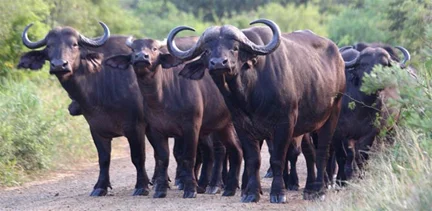Environment & Ecology
Context: According to recent studies the Cape Buffalo populations were less genetically variable or diverse in the extreme southern part of their range. This means that there had been more interbreeding among them.
About the Cape Buffalo/ Southern Savanna Buffalo:

- African buffalo occur in Sub-Saharan Africa.
- They prefer a habitat with dense cover, such as reeds and thickets, but can also be found in open woodland, montane grasslands and forest, savannas, and moist lowland rainforests.
- During the dry season, males leave the herd and form, bachelor groups. Two types of bachelor herds occur: ones made of males aged 4 to 7 years and those of males 12 years or older.
- During the wet season, the younger bulls rejoin a herd to mate with the females. They stay with them throughout the season to protect the calves.
- African buffalo have a strictly herbivorous (graminivorous, florivorous) diet.
- They feed on a wide variety of grasses, sedges, leaves, and other plants.
- African buffalo are polygynandries (promiscuous) meaning that both males and females’ mate with multiple partners.
- They mate and give birth only during the rainy seasons.
- Cows usually reproduce every two years.
- They give birth to a single calf after a gestation period of 11.5 months.
- Males become reproductively mature when they are 4 to 6 years old.
- IUCN Red list: Near Threatened (NT)
Source: DownToEarth
Previous Year Questions
Q.1) Consider the following animals
- Hedgehog
- Marmot
- Pangolin
To reduce the chance of being captured by predators, which of the above organisms rolls up/roll up and protects/protect its/their vulnerable parts? (2021)
- 1 and 2
- 2 only
- 3 only
- 1 and 3
Q.2) With reference to India’s biodiversity, Ceylon Frogmouth, Coppersmith Barbet, Gray Chinned Minivet and White-throated Redstart are (2020)
- Birds
- Primates
- Reptiles
- Amphibians











